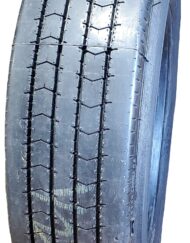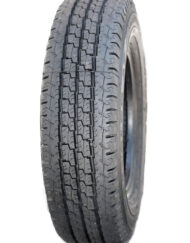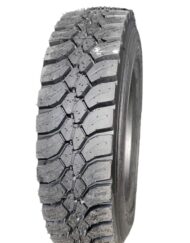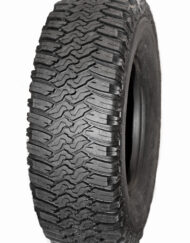The History of Tires
Unless you have tires on the brain, day-in and day-out, as we do, you probably don’t put a lot of thought into the origins of the automotive tire. However, if you’re the type of gearhead who slides behind the wheel and suddenly thinks, “I wonder what the evolution of passenger tires looks like?” then this post is for you. From tricycles to tire pressure monitoring systems (TPMS), tires have come a long way.
We’re not going to document the invention of the wheel in this post, we’ll leave that to the prehistorians; however, we will attempt to take a walk (or roll, if you will) through time and cover the major innovations of the rubberized tire.
In the Beginning: The Birth of the Modern Tire
1300s
Word nerd alert! Historians at the online etymology dictionary write that the in the 1300s, “the notion is of the tire as the dressing of the wheel.” Therefore, “tire” or, if you’re British, “tyre” is simply a shortening of “attire.”
1880s
Let’s fast forward some 500 years to 1845. Within weeks of one another, British inventor Thomas Hancock, and American inventor and entrepreneur, Charles Goodyear, were awarded patents for the vulcanization of rubber. Named after the Roman god of fire, vulcanization “is a chemical process for converting natural rubber or related polymers into more durable materials by the addition of sulfur…Vulcanized materials are less sticky and have superior mechanical properties” (Wikipedia).
Soon after Goodyear’s and Hancock’s patents, in 1847, Scottish inventor Robert William Thompson patented a solid pneumatic tire, which uses rubber and enclosed air to reduce vibration. Proving to be too costly, his design never saw production.
Necessity proved to be the mother of invention in 1888, though, when another Scot, John Boyd Dunlop, developed a tire that would make his child’s tricycle easier to ride over rough Belfast streets. After watching his son suffer from a nasty head cold, he decided to make his child’s doctor-prescribed trike rides more comfortable by attiring his tricycle with tires made of canvas bonded with rubber. As you may have guessed by his surname, Dunlop’s tires were a good deal successful than Thompson’s. Although his subsequent patent was invalidated in 1892 (Thompson had, after all, beat him to the patent office) his invention and his tires quickly caught on, thanks in large part to cyclist Willie Hume’s racing success.
Here’s another name you may recognize: André Michelin. In 1895, he and his brother, Edouard, were first to use pneumatic tires on a horseless carriage. Known to most as the automobile.
Although Goodyear died bankrupt, a company bearing his name, Goodyear Tire and Rubber, was formed in Akron, OH in 1898. The company remains headquartered in Akron to this day.
1900s
According to ThoughtCo., “In 1903, P.W. Litchfield of the Goodyear Tire Company patented the first tubeless tire, however, it was never commercially exploited until the 1954 Packard. In 1904, mountable rims were introduced that allowed drivers to fix their own flats. In 1908, Frank Seiberling invented grooved tires with improved road traction. In 1910, B.F. Goodrich Company invented longer life tires by adding carbon to the rubber.” And, in 1937, Goodrich developed the first synthetic rubber tire out of a patented substance called “Chemigum.”
At the start of the Baby Boom, in 1946, Michelin developed the radial tire, which far outperformed the bias-ply tire constructed that preceded it. Although the use of radial tire technology spread quickly throughout Europe and Asia (it boasted superior handling and fuel economy numbers), it took a while to catch on in the US. It wasn’t until 1968, when the consumer advocacy publication, Consumer Reports, awarded its two top spots to radial tires. The magazine cited longer life, increased safety, handling, and noted that the in the long run, the costs of running on radials was far less bias-ply tires, which needed to be replaced frequently (Harvard Business School). After a slow start, the radial tire currently enjoys a market share of 100%.
Run-flat tires are developed in the 1980s to help the driver maintain a constant driving speed and avoid accidents caused by dramatic loss of air pressure.
2000s
As of 2007, all vehicles must be equipped with Tire Pressure Monitoring Systems. After the massive Firestone recall in the 1990s, the US Congress mandated the use TPMS on passenger vehicles to help warn drivers of underinflated tires.
The Future
If the designers at Hankook are to be believed, the future is an airless tire.

The Present
If you’re looking for expertly-crafted and affordable American-made retread tires, look no further than Tire Recappers, we know tires and we have what you’re looking for.




